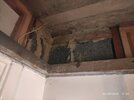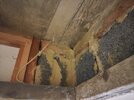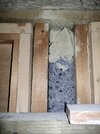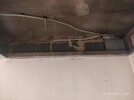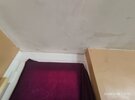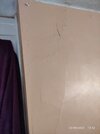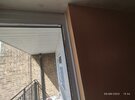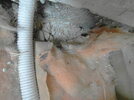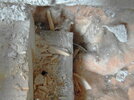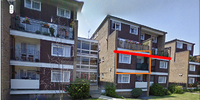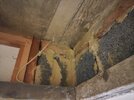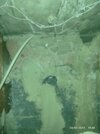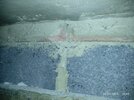I need to soundproof a couple of rooms in my first-floor flat (there's only one flat above, but it's split over two levels) and a major part of the problem is the internal cinderblock walls, which are transmitting a lot of sound from the other flats in this block and the adjoining block (I was told that this is called flanking noise).
Covering the walls with clip+channel and Rockwool and two layers of soundproofing plasterboard might fix the problem, but it will make the walls several cm thicker and I'd have to move the doors in the living room and bedroom as there'd be no room for them to open with the thicker walls. So if they're not loadbearing, I'm considering just removing the internal walls between the living room and bedroom and the bedroom and bathroom, and replacing them with stud walls that are acoustically isolated from the structure. I'd still have to soundproof the external and party walls but I'd lose less space that way and could leave the doors where they are.
I know I need to get a proper survey done before removing any walls to make absolutely sure they're not load-bearing, so don't worry, I'm not going to start knocking them down if you say you think they might not be. I'm just curious about whether cinderblock is likely to have been used for load-bearing walls.
The first two photos show the end of the wall between the bedroom and the living room (the bit on the right of the photos is the wall between the bedroom and hall). As you can see, there's a single brick layer on top, with cinderblock underneath.
The third photo shows the exposed edge of the wall between the bedroom and bathroom.
The last photo shows the wall between the hall and kitchen, which I have no intention of doing anything to, but I thought it might be useful as it shows a larger area of uncovered wall structure.
If it's possible that they're not load-bearing, will any structural engineer who's a member of IStructE (Institution of Structural Engineers) or ICE (Institution of Civil Engineers) be able to confirm this for certain, and how much should I expect to pay for them to do this and provide a report that I can use to get permission from the leaseholder (local authority) and building control to remove the walls?
Covering the walls with clip+channel and Rockwool and two layers of soundproofing plasterboard might fix the problem, but it will make the walls several cm thicker and I'd have to move the doors in the living room and bedroom as there'd be no room for them to open with the thicker walls. So if they're not loadbearing, I'm considering just removing the internal walls between the living room and bedroom and the bedroom and bathroom, and replacing them with stud walls that are acoustically isolated from the structure. I'd still have to soundproof the external and party walls but I'd lose less space that way and could leave the doors where they are.
I know I need to get a proper survey done before removing any walls to make absolutely sure they're not load-bearing, so don't worry, I'm not going to start knocking them down if you say you think they might not be. I'm just curious about whether cinderblock is likely to have been used for load-bearing walls.
The first two photos show the end of the wall between the bedroom and the living room (the bit on the right of the photos is the wall between the bedroom and hall). As you can see, there's a single brick layer on top, with cinderblock underneath.
The third photo shows the exposed edge of the wall between the bedroom and bathroom.
The last photo shows the wall between the hall and kitchen, which I have no intention of doing anything to, but I thought it might be useful as it shows a larger area of uncovered wall structure.
If it's possible that they're not load-bearing, will any structural engineer who's a member of IStructE (Institution of Structural Engineers) or ICE (Institution of Civil Engineers) be able to confirm this for certain, and how much should I expect to pay for them to do this and provide a report that I can use to get permission from the leaseholder (local authority) and building control to remove the walls?


